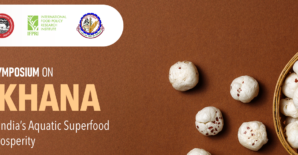Price spike in food commodities in 2008 especially in rice eating nations created alarming situation in South and Southeast Asian countries. As an immediate reaction to price spike and to safeguard the food security, many rice exporting countries raised export taxes and imposed trade restrictions.
The gap in lack of coordination between food surplus countries and food deficit countries such as the biggest rice exporters India and Pakistan from South Asia, and Thailand and Vietnam from Southeast Asia and to the biggest importer Bangladesh, Nepal, and Sri Lanka from South Asia, and Indonesia, Malaysia, and the Philippines from Southeast Asia, widened.
Dr P K Joshi, Director – South Asia, IFPRI presented at the 2nd ASEAN Rice Trade Forum in Indonesia on ASEAN and SAARC: Towards Regional Trade Exchange. He highlighted the need for common agriculture policy, exchange of knowledge and know-how and opportunities of trade in agricultural commodities.
The available information reveal that over the last decade there has been increase in rice imports i.e. Southeast Asia increased to 14 per cent in 2011 as against 10 per cent in 1990, whereas South Asia reduced its import from 5 per cent in 1990 to 3 per cent in 2011. During the last decade, South Asia increased rice exports by 10 per cent as against to 2 per cent by Southeast Asia. India’s efforts to address food self-sufficiency and food security through support prices, trade and welfare schemes were quite impressive. Programs such as Food Security Mission, subsidy in fertilizer and irrigation, buffer stock, MNREGA and direct cash transfer has helped to provide food and nutritional security to the population and open trade options.
Due to varying quality of rice and consumer preference, the existing agreement between the SAARC-ASEAN regions is almost nil, but there are possibilities of trade in palm oil, rubber, from ASEAN and wheat, milk, cotton lint and soybean from SAARC. Possible collaboration on bio safety and biotechnology can also be explored. At present bilateral trade agreements between India-ASEAN exist through ASEAN–India Free Trade Area (AIFTA) exists, but efforts are needed to streamline trade within SAARC countries
Dr Joshi highlights:
- There is a need for common agriculture policy before the ASEAN Economic Community (AEC) 2015
- Lessons learnt and best practices needs to be adopted from both regions such as SAARC Food Bank which reserves 486,000 metric tons and SAARC seed bank and increase in productivity and exports options
- Identify inter-regional trade in agricultural commodities
- Develop network to share knowledge and best practises




